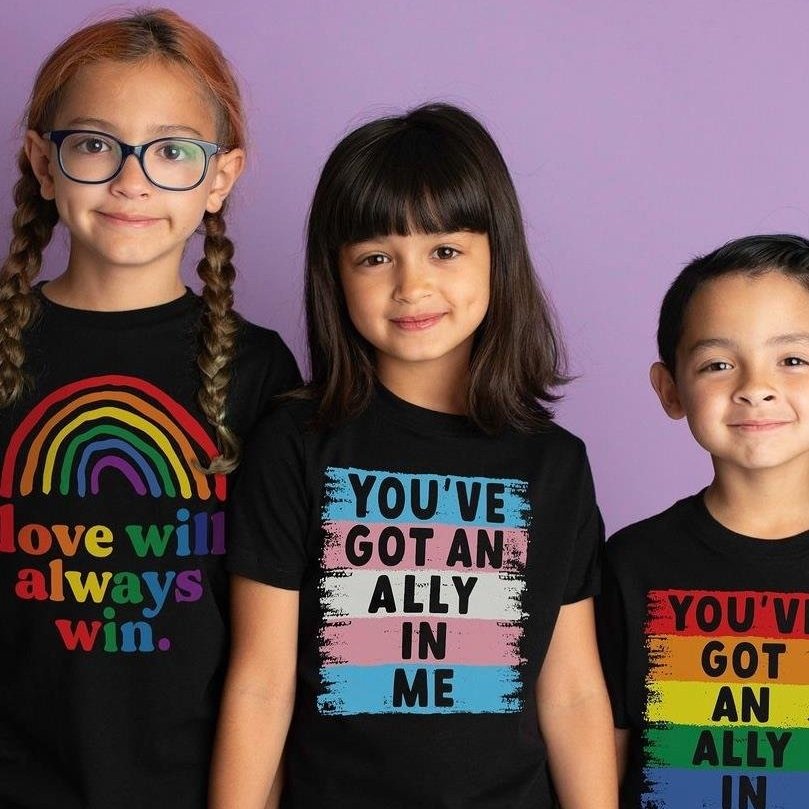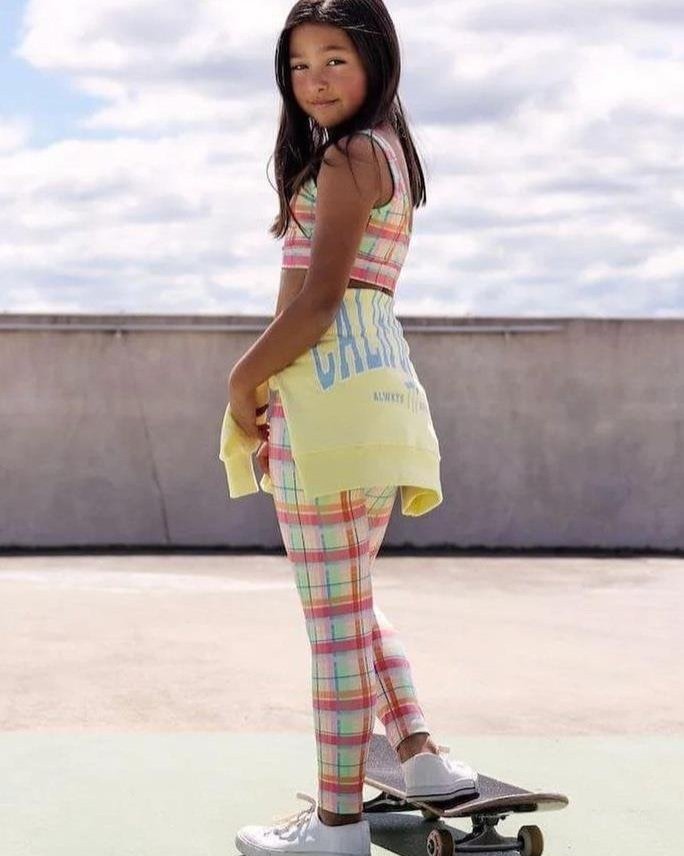Key Kidswear Trends
With global clothing and footwear sales estimated to reach more than $286bn in 2023, this is the demographic to focus on when targeting new fashion audiences. We highlight the key trends impacting how junior consumers will dress for the foreseeable future, including lucrative licensed product opportunities, the resurrection of ‘mini-me’, inspired inclusivity and active-lifestyle-led updates.
We grouped them into 4 themes:
1. The New Licensing Landscape
The Gen Alpha product landscape is teeming with licensed properties-to-know – and they’re not all emerging from heavy- hitting entertainment behemoths. Instead, relatively new YouTube- and gaming-channel-led brands are capturing youngsters’ imaginations, while more established retro reboots and revivals play to parental preferences.
Nostalgia for 90s/00s: The 90s and 00s continue to be key nostalgic touchpoints for those under 30. This is heavily impacting on kids’ product development. Again, licensing comes into focus. Puma is cleaning up on the retro merch front with SpongeBob SquarePants and Pokémon Meanwhile, Bratz has ramped up its presence in a collab with Dutch designer JimmyPaul; Hello Kitty has joined forces with Crocs; this summer’s Barbie x Forever 21 collection looks distinctly Y2K; and Mattel’s purple dinosaur Barney is set to make a comeback with a major franchise relaunch. In other news, Fisher-Price has released a 90s-inspired range featuring a baby’s boombox and mixtape and a toy Game Boy, which look ripe for cute apparel merchandise add-ons with a vintage appeal.
Forever 21 X Barbie
Bratz X JimmyPaul
Hello Kitty X Crocs
2. Inclusivity Rules
From unbiased sizing and meeting the needs of kids of all abilities to gender-neutral offerings and representation of diverse communities, inclusivity is now a given in the Gen Alpha apparel world. We highlight the brands ensuring every child is considered in their strategies. The number of children with disabilities is estimated at nearly 240 million worldwide.
Empowering Print & Pattern: Breaking boundaries in kidswear includes rejecting gender-normative print and pattern stories that do little to empower or reflect modern attitudes. US-based Annie the Brave makes STEM-inspired pieces for girls that have bold conversational prints with cars, construction and science-lab motifs. Likewise, Piccolina Kids’ (also US) designs feature enriching print themes, such as historical female characters and women in space, running with the motto: “Children Today. Changemakers Tomorrow.” Also, see Black-owned Royal Nation (US), which rethinks the usual white-superhero- and-princess construct seen in branded apparel by using characters of colour so that more kids can relate to the characters on their clothing.
StereoType Kids
Royal Nation
Clothes Without Limits
3. Little Active Lifestyles
Children’s lifestyles continue to mirror the more active preferences of their parents, so sporty offspring are presenting themselves as a big opportunity for brands. In a survey of British and American Gen Alphas, 47% said they prefer to split their free time equally between indoors and outdoors. We highlight trends to track in the kids’ active sphere.
Putting the Fun into Fitness: Colourful and playful attributes are sometimes missing when it comes to kids’ activewear. But a couple of brands are addressing this with super-bold patterns and fun styles. See Korea’s Jelly Mallow, US-based Online Ceramics’ mini-me tees and sweats, as well as Australia’s Sunny Active.
Sunny Active
Sunny Active
Jelly Mallow
Jelly Mallow
4. Mini-Me Revivalism
Mini-me – downsized copies of adult outfits – has resurged as a Gen Alpha dressing trend (after a brief dip during the pandemic) among celebrity, tastemaker and influencer parents. Its impact is widespread, with younger parents tapping into an aspirational and cute family-lifestyle-led approach to dressing their offspring in their own image.
The New Look: Stylistically, the mini-me concept has moved from being streetwear- led or very classic to more minimalist and modern looks, such as those from UK-based Ando, which offers apparel for mothers as well as children up to age eight in clean shapes, bold prints and pared-back colours. There’s also a strong focus on functionality and modern family life, as Studio Noos (Netherlands) shearling teddy holdall stroller bags are sold alongside mini-versions for kids, while pragmatic garments like its boilersuit overalls come in unisex sizing and a natural colour palette.
Although the aesthetics of mini-me are changing, the demographic of mid- to luxury-level buyers stays the same. Multi-brand Canadian retailer Ssense currently stocks Knwls Kids, a collection designed by Charlotte Knowles, a 2017 Central Saint Martins graduate, in the style of her womenswear. The line features miniature leather handbags and matching tops and leggings underneath corset tops with colourful prints. Also see US-based Maisonette, The Children’s Place, Old Navy for swimwear, Hanna Andersson for matching sleepwear as well as the UK’s Seraphine for cute co-ordinated knits.
Ando
SleepyDoe X Ando
Studio Noos
Key Learnings
Stay on Top of Emerging Licensed Properties
With the advent of YouTube and Roblox as major junior media influences, it’s never been more important to stay aware of the potential of lesser-known franchises and trendsetters impacting on Gen Alpha. This generation multistreams, so ensure your channels of information are up to speed and inclusive of these developments.
Build Inclusivity into All Kids’ Collections
From adaptive functionality and extended sizes to gender-neutral print, pattern and styling, inclusive elements are not difficult to build into kids’ ranges and marketing campaigns. However, for an authentic and meaningful offering, you need to work in inclusive strategies from the early product development stages.
Ensure Activewear Reflects Kids’ Pursuits
Like their parents, children engage in a breadth of active pursuits, from yoga and outdoor adventuring to tennis and football. Make the most of this opportunity, delivering collections and campaigns that reflect diverse active lifestyles, rather than rely on generic sporty looks.
Don’t Dismiss Mini-Me as a Fad
Mini-me has appeal as an aspirational way to dress children and keep family styling on point. The streetwear-led looks of a few years ago have made way for a more pared-back approach to the trend that makes it even more commercial, so explore ways in which appropriate adult designs can be converted into cute kidswear collections.













